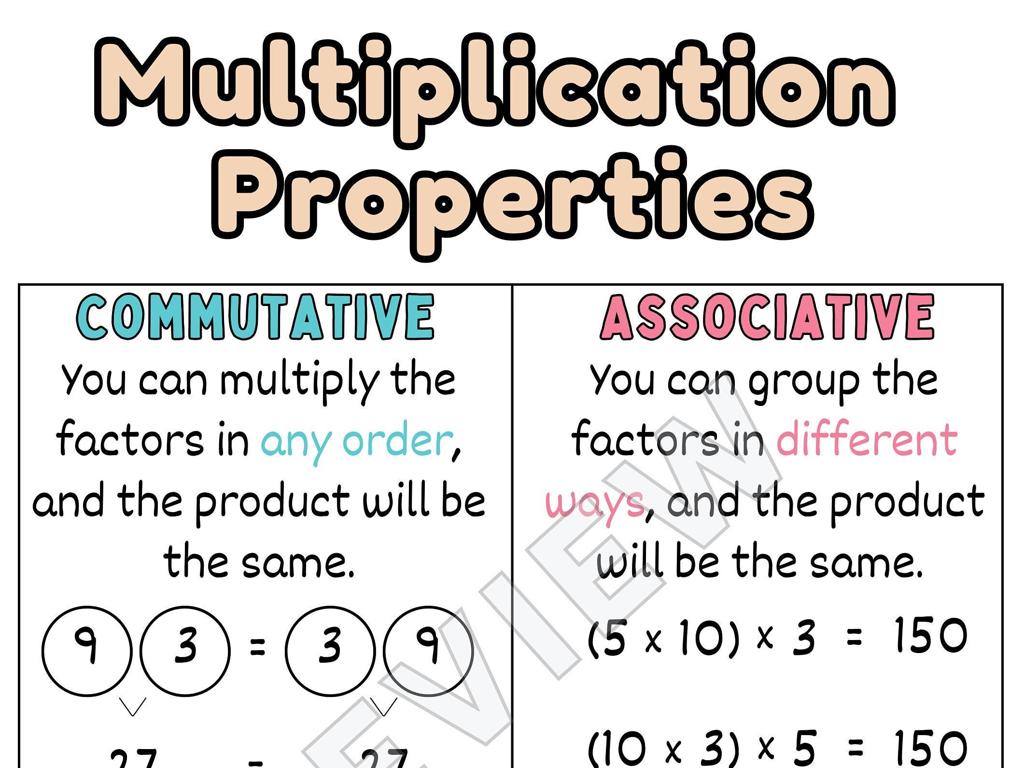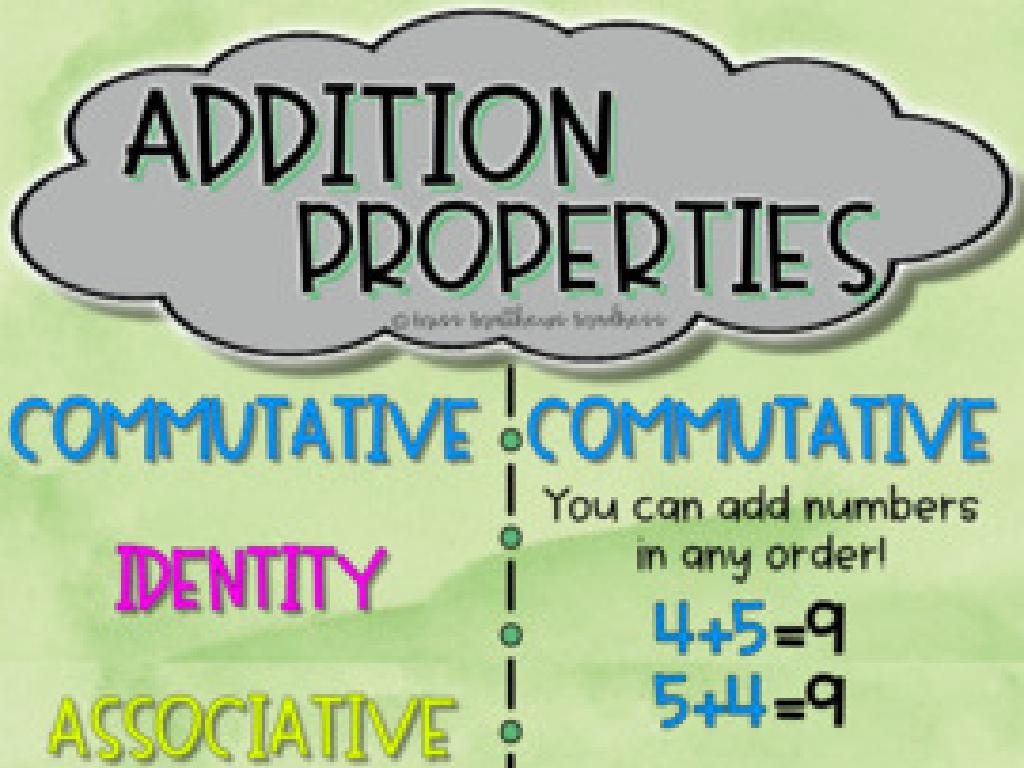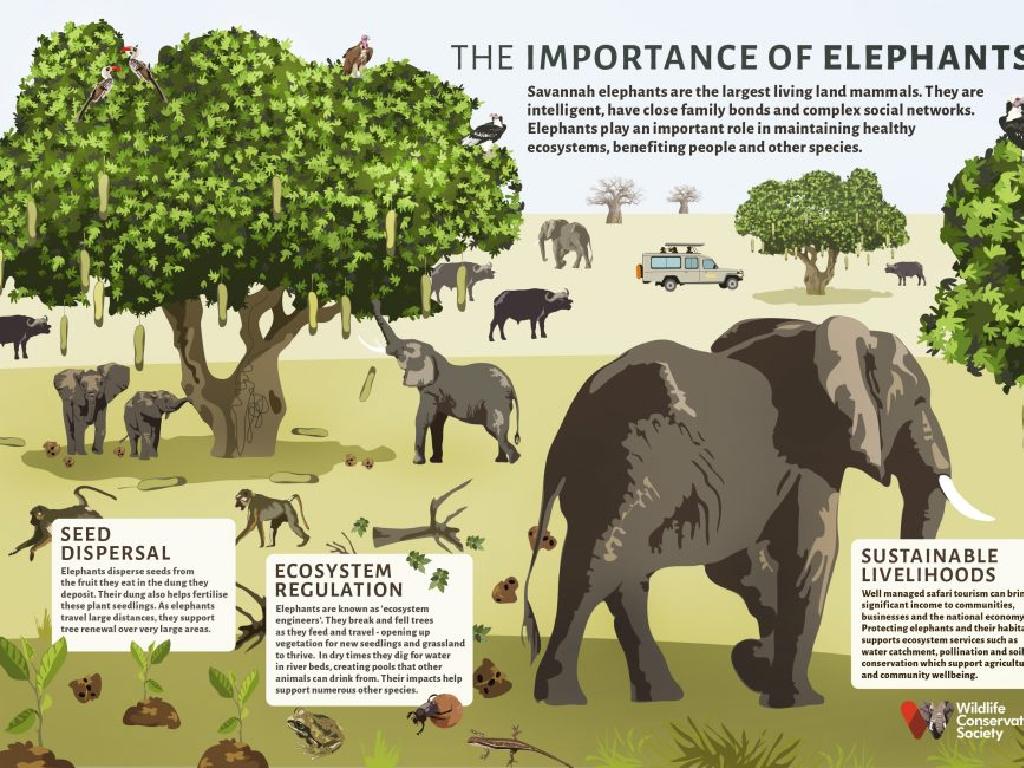Determine The Meaning Of Domain-Specific Words With Pictures
Subject: Language arts
Grade: Sixth grade
Topic: Domain-Specific Vocabulary
Please LOG IN to download the presentation. Access is available to registered users only.
View More Content
Exploring Domain-Specific Vocabulary
– Domain-specific words in context
– Words unique to a field, like ‘photosynthesis’ in Science
– Importance of specialized vocabulary
– Knowing these words helps understand the subject better
– Examples from various domains
– Science: ‘atom’, Math: ‘quotient’, Literature: ‘metaphor’
– Enhancing comprehension with pictures
– Visual aids can clarify the meaning of complex terms
|
This slide introduces the concept of domain-specific vocabulary, which are words that are particularly used in a specific area of study or profession. Understanding these words is crucial for students as it allows them to grasp the content of a subject more effectively. Provide examples from different domains to illustrate the variety of specialized vocabularies. Emphasize the use of pictures and visual aids to help students remember and understand these terms. Encourage students to think of other domain-specific words they know and how images could represent them. This will prepare them for more in-depth study in various subjects and enhance their overall academic literacy.
Understanding Domain-Specific Vocabulary
– Define domain-specific words
– Terms specific to a particular field or subject
– Contrast with everyday language
– Unlike common words, these are specialized terms
– Context’s role in comprehension
– Clues from text and images help decipher meanings
– Examples in various domains
– Medical: ‘stethoscope’, Math: ‘quadrilateral’
|
This slide introduces students to the concept of domain-specific words, which are terms that are particularly relevant to a specific area of study or interest, unlike everyday language that is used across various contexts. Emphasize the importance of understanding these words within their specific domain, as they are key to comprehending more complex texts and concepts. Use examples from subjects like medicine or mathematics to illustrate how these words function. Encourage students to use context clues from surrounding text and associated images to infer the meanings of unfamiliar domain-specific words. This foundational understanding will aid them in all academic subjects.
Deciphering Domain-Specific Words with Visuals
– Strategies to spot domain-specific words
– Look for words unique to the subject, like ‘photosynthesis’ in science.
– Use visuals to grasp word meanings
– Pictures can show concepts like ‘habitat’ more clearly than a definition alone.
– Practice with a science article
– Find and highlight terms in an article that are specific to science.
– Discuss findings and understanding
– Share the words you found and how pictures helped you understand them.
|
This slide aims to equip students with the skills to identify and understand domain-specific vocabulary through context and imagery. Emphasize the importance of recognizing words that are specific to certain subjects, such as science or history, and how these words may not be used in everyday language. Encourage the use of pictures and diagrams to create a visual connection to the meaning of these words. For the practice activity, provide a science article with rich domain-specific vocabulary and have students highlight or list the terms they find. Then, use pictures or create a class discussion to explore the meanings of these words. This interactive approach helps solidify the students’ understanding and recall of domain-specific vocabulary.
Science Vocabulary: Domain-Specific Words
– Examples of science terms
– Words unique to science like ‘molecule’, ‘organism’
– Learn ‘hypothesis’, ‘photosynthesis’, ‘atom’
– ‘Hypothesis’ is an educated guess; ‘photosynthesis’ is how plants make food; ‘atom’ is the basic unit of matter
– Activity: Matching words to meanings
– Match terms with correct definitions and images
– Use pictures to understand terms
|
This slide introduces students to domain-specific vocabulary in science, focusing on terms such as ‘hypothesis’, ‘photosynthesis’, and ‘atom’. Start by discussing the importance of understanding vocabulary that is specific to science. Provide examples of each word in a scientific context. For the activity, prepare cards with words, definitions, and pictures for students to match. This interactive exercise will help solidify their understanding of these terms and how they relate to the subject of science. Encourage students to use context clues from pictures and definitions to determine the meanings of the words. This activity will also serve as a visual aid to enhance memory retention of the vocabulary.
Math Vocabulary with Visuals
– Domain-specific words in Math
– Specialized terms used in math subjects
– Understand ‘polygon’, ‘quadrilateral’, ‘radius’
– ‘Polygon’: a shape with many sides, ‘Quadrilateral’: a four-sided polygon, ‘Radius’: distance from center to edge of a circle
– Flashcard creation activity
– Combine words, definitions, and images on cards
|
This slide introduces students to the concept of domain-specific vocabulary in mathematics. Start by explaining that domain-specific words are terms that are specific to a particular field of study, like math. Provide clear definitions and examples for words such as ‘polygon’, ‘quadrilateral’, and ‘radius’, and use images to reinforce understanding. The activity involves students creating their own set of flashcards for each term, which should include the word, a simple definition, and a representative picture. This hands-on activity will help solidify their understanding of the terms and how they are used in math. For the teacher: Prepare examples of flashcards, ensure students have access to materials, and consider grouping students for collaborative learning.
Exploring Literature Domain Words
– Domain-specific words in Literature
– Words unique to the field of Literature, e.g., ‘plot’, ‘theme’, ‘narrative’
– Learn ‘metaphor’, ‘protagonist’, ‘genre’
– ‘Metaphor’: a figure of speech; ‘Protagonist’: main character; ‘Genre’: category of art
– Class Activity: Sentence Creation
– Write sentences using new words and illustrate with drawings or images
– Use pictures to understand words
|
This slide introduces students to domain-specific vocabulary in Literature, such as ‘metaphor’, ‘protagonist’, and ‘genre’. These terms are crucial for discussing and analyzing literary works. The activity encourages students to write sentences using these new words, supported by visual aids to reinforce their understanding. For example, they could draw a hero for ‘protagonist’ or a book cover for ‘genre’. Teachers should prepare examples of sentences and corresponding images to guide the students. They should also encourage creativity and provide feedback on the sentences and the relevance of the visual aids used.
Using Context Clues for Domain-Specific Words
– Using context to define words
– Look for hints around an unknown word to guess its meaning.
– Context clues in sentences
– For example, ‘The botanist examined the flora, noting each plant’s characteristics.’ Flora refers to plants.
– Practice with domain-specific words
– Find words related to a specific subject and use sentence clues to define them.
– Guessing word meanings
– Try to deduce the meaning of new words without a dictionary.
|
This slide aims to teach students how to use context clues to determine the meaning of domain-specific words. Context clues can be definitions, examples, antonyms, or synonyms provided in the text surrounding an unknown word. Provide clear examples of sentences with context clues and explain how they hint at the word’s meaning. During practice, present sentences with domain-specific words and guide students to use context clues to guess the meanings. Encourage discussion and allow students to explain their reasoning. This activity will enhance their vocabulary and reading comprehension skills, particularly in subject-specific contexts.
Class Activity: Vocabulary Gallery Walk
– Explore stations with domain-specific words
– Each station: word, definition, picture, sentence
– Discuss meanings with classmates
– Complete a worksheet on visited words
|
This activity is designed to engage students in learning domain-specific vocabulary through an interactive gallery walk. Set up stations around the classroom, each dedicated to a different domain-specific word relevant to the current unit of study. At each station, provide a clear definition, an illustrative picture, and an example sentence using the word. Students will move between stations, discussing with their peers to deepen their understanding of each word’s meaning and usage. Provide a worksheet for students to fill out as they go, ensuring they reflect on and record the information from each station. This activity promotes active learning, collaboration, and the practical application of new vocabulary in context.
Review and Reflection: Domain-Specific Vocabulary
– Review domain-specific vocab importance
– Reflect on vocabulary’s role in comprehension
– Understanding these words helps grasp complex ideas in texts.
– Discuss how these words aid text understanding
– For example, knowing ‘photosynthesis’ helps in science texts.
– Plan to share your insights with the class
|
This slide aims to consolidate the students’ understanding of domain-specific vocabulary and its significance in grasping the meaning of texts related to particular fields or subjects. Emphasize the importance of these specialized terms in building expertise in a subject area. Encourage students to think about how their comprehension of texts has improved after learning these words. Prepare them to share their personal experiences and examples of how domain-specific vocabulary has helped them in understanding class materials, homework, or even topics of personal interest. This reflection and sharing process will reinforce their learning and highlight the practical benefits of acquiring such vocabulary.
Homework: Exploring Domain-Specific Vocabulary
– Find a text on a subject you love
– Spot five domain-specific words
– Define each word clearly
– Use a dictionary or the internet for accurate definitions
– Draw a picture for every word
– Illustrations should represent the concept of each word
|
This assignment is designed to help students recognize and understand domain-specific vocabulary through the context of their interests. By choosing a subject they enjoy, students will be more engaged in the task. They should look for specialized terms that are unique to that subject. After identifying these terms, students should research their meanings to ensure they grasp the concepts correctly. Drawing a picture related to each word will aid in visual learning and memory retention. In the next class, students can present their words and pictures, fostering a discussion on how these terms apply to their favorite subjects and why they are important.






